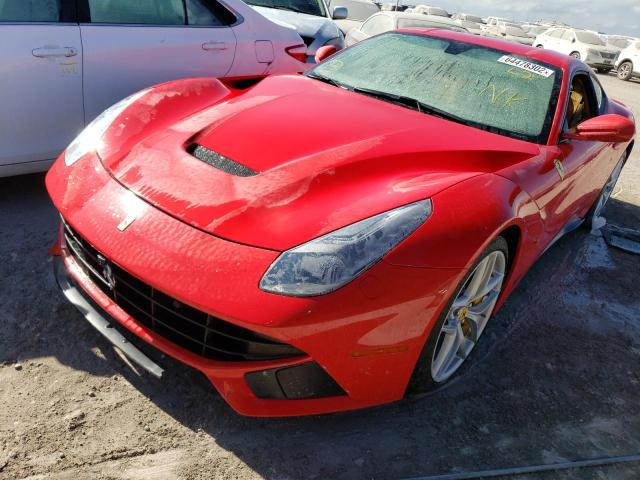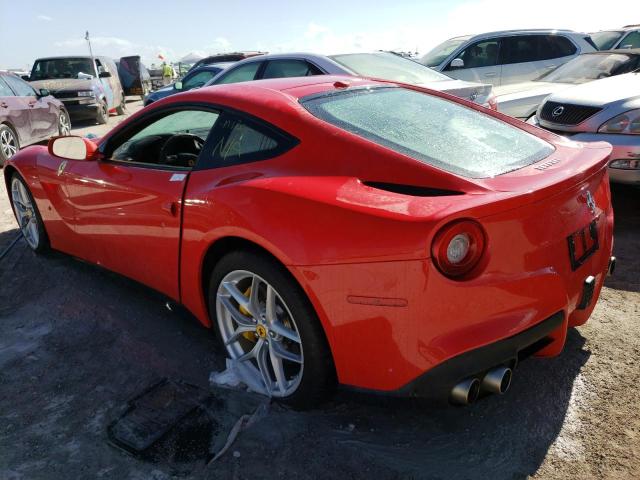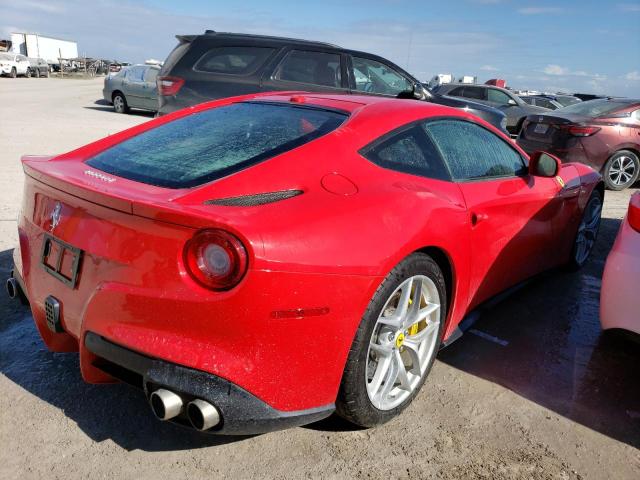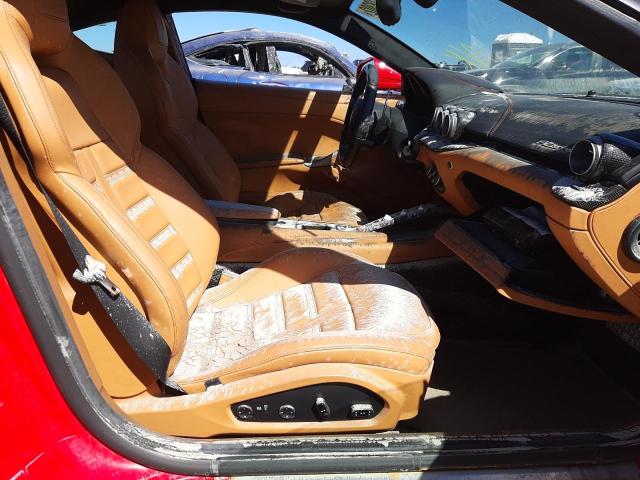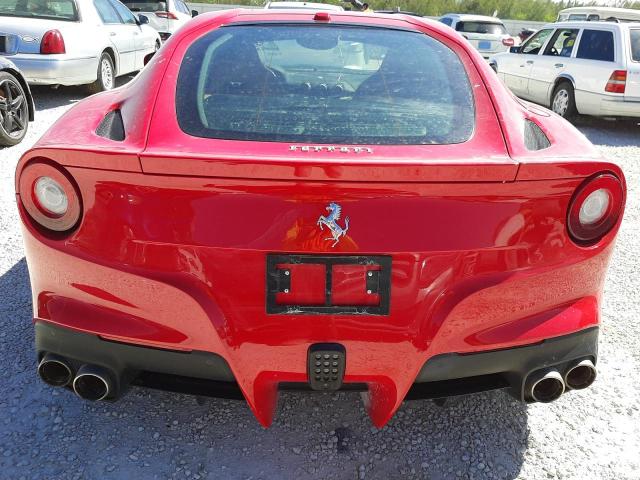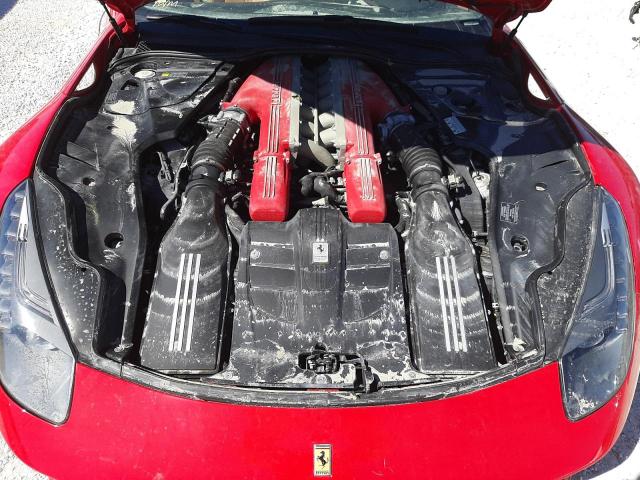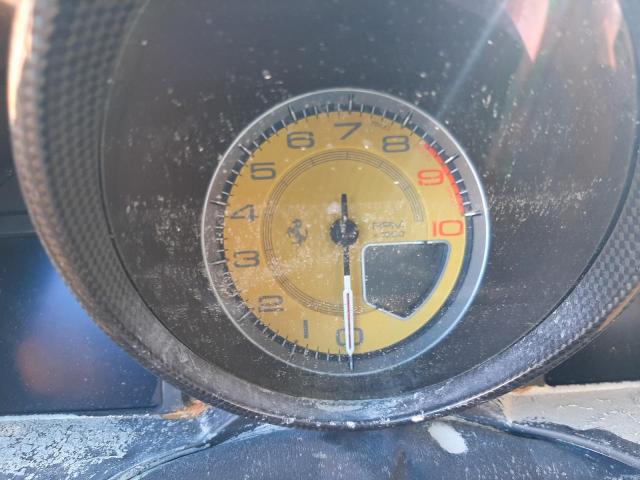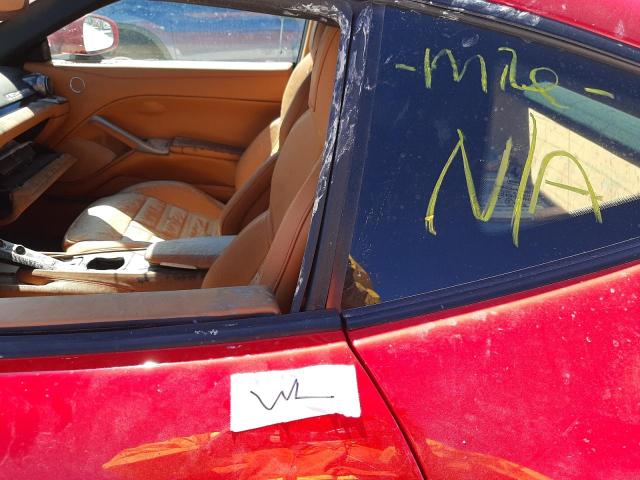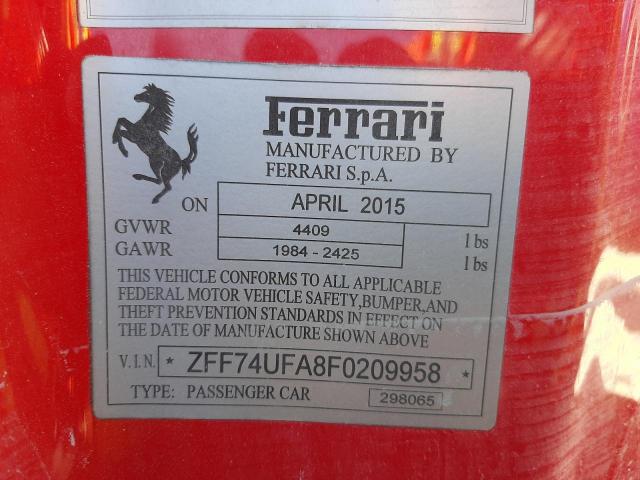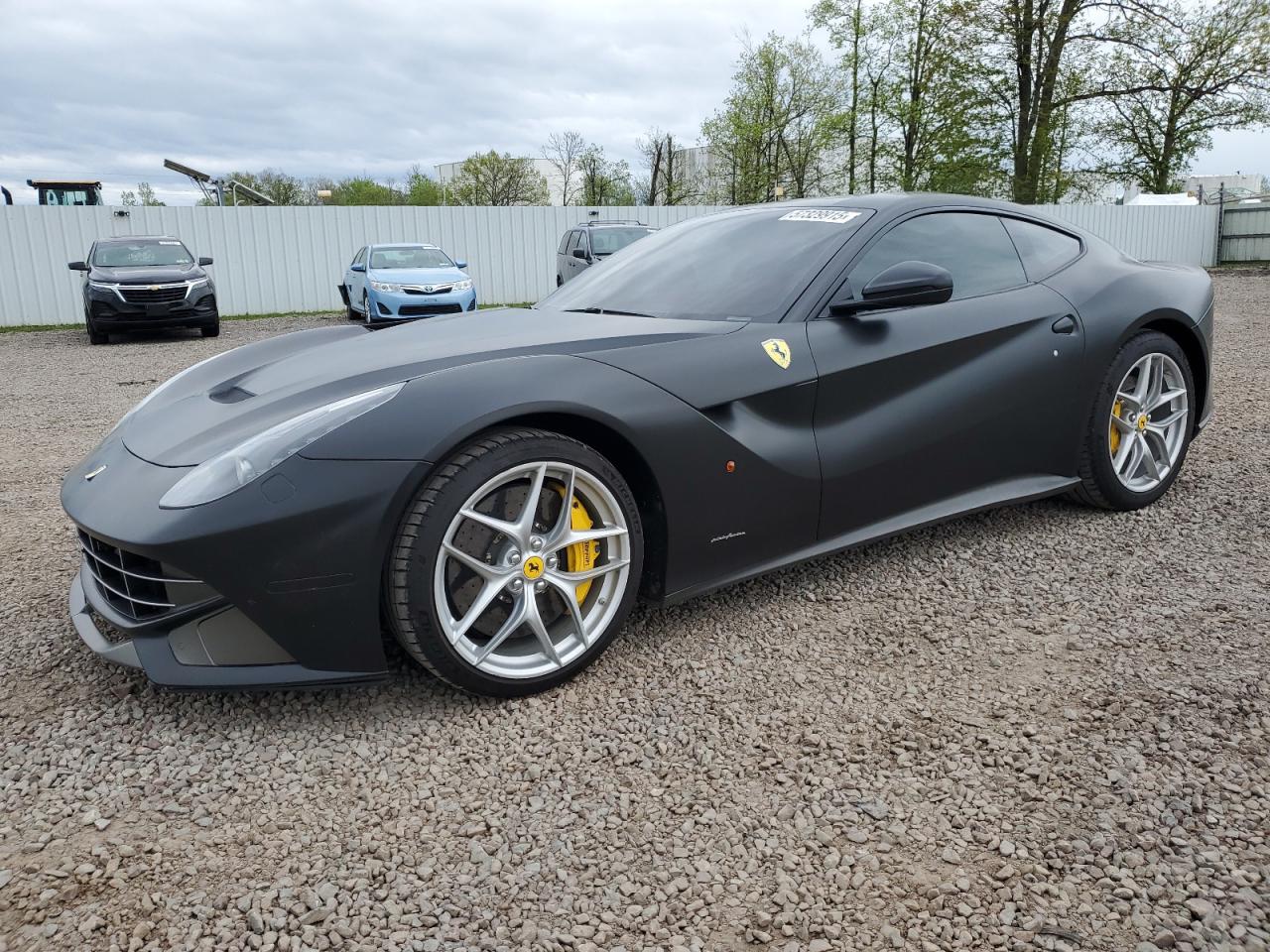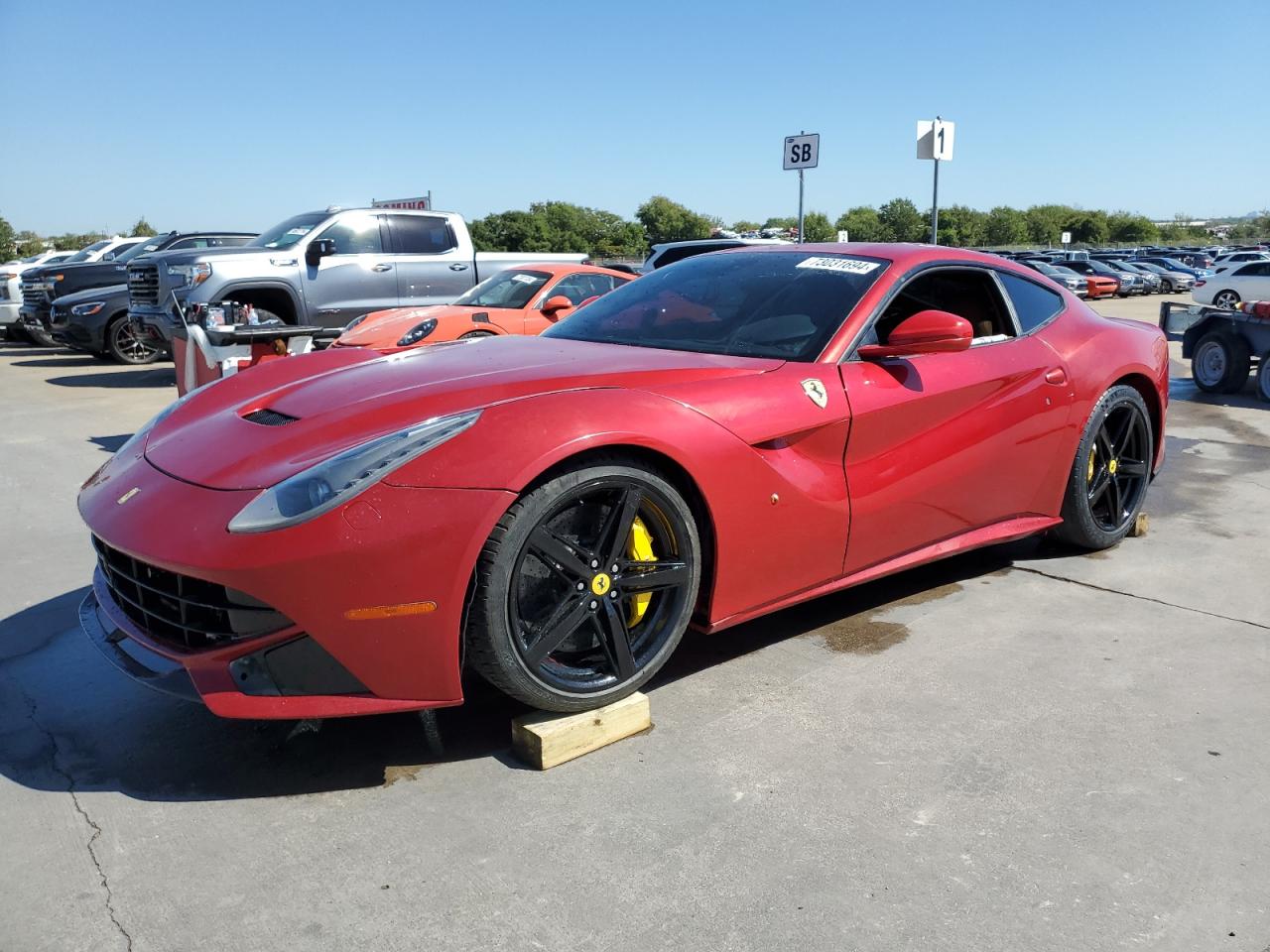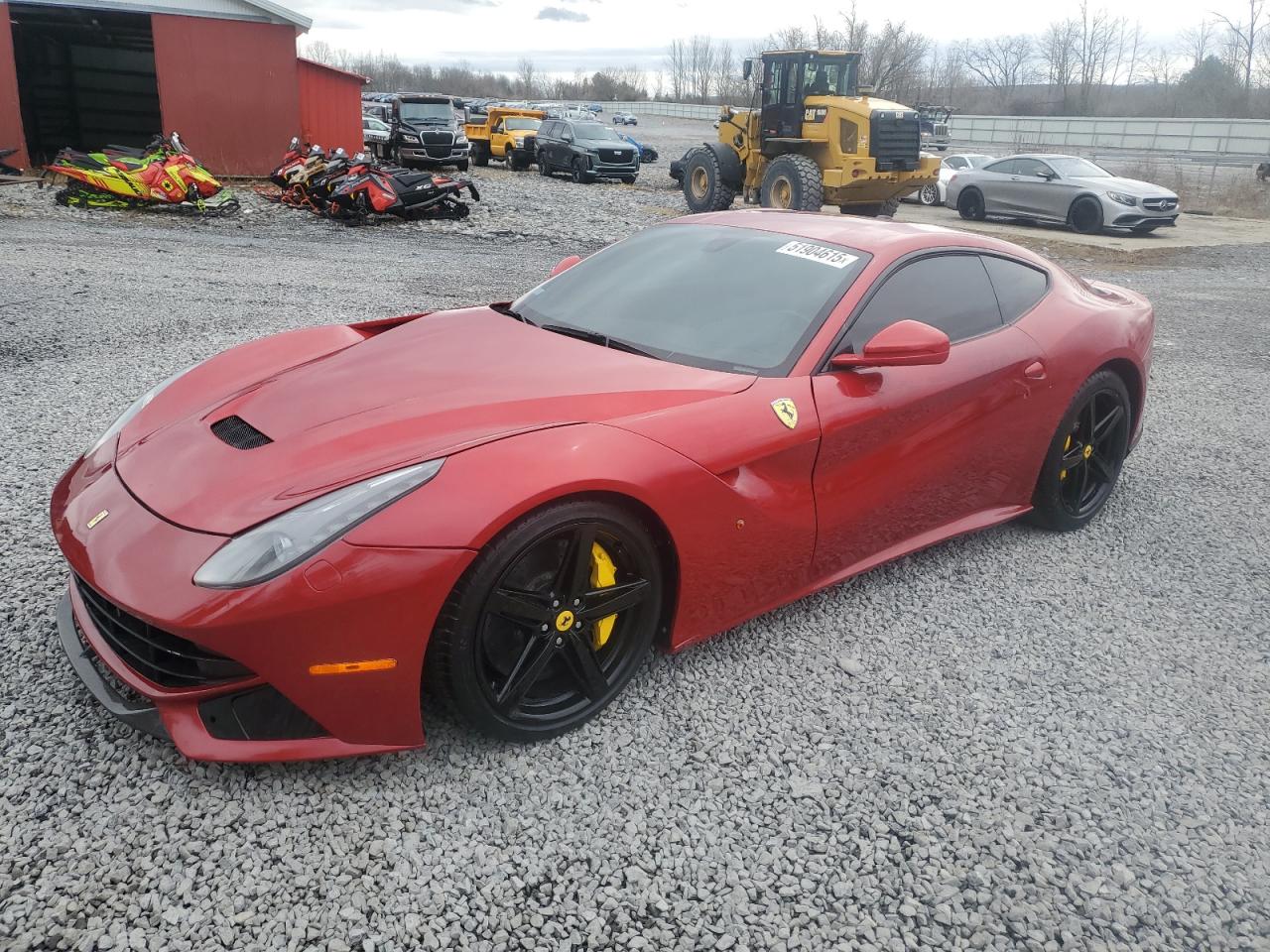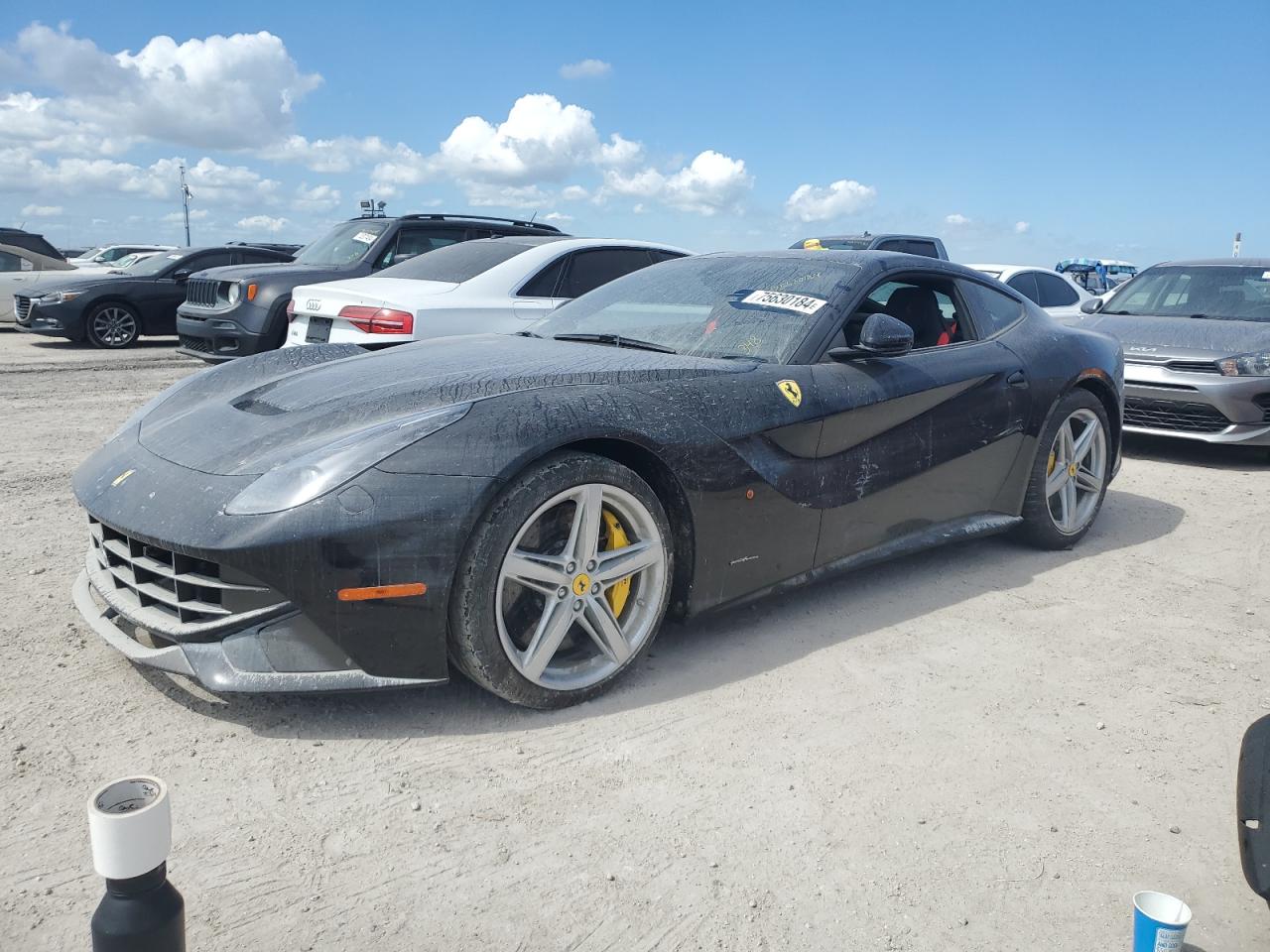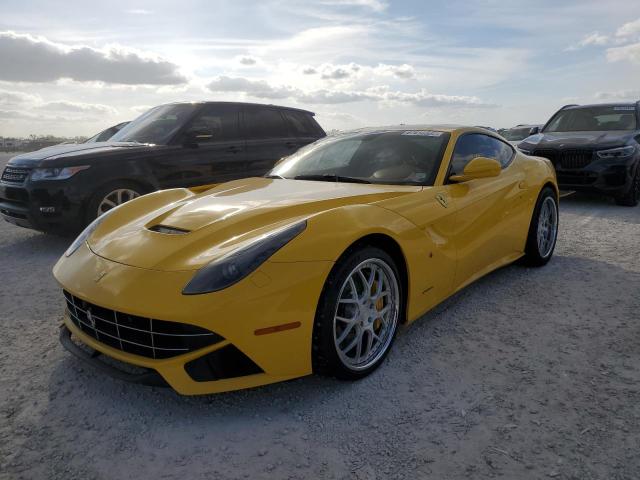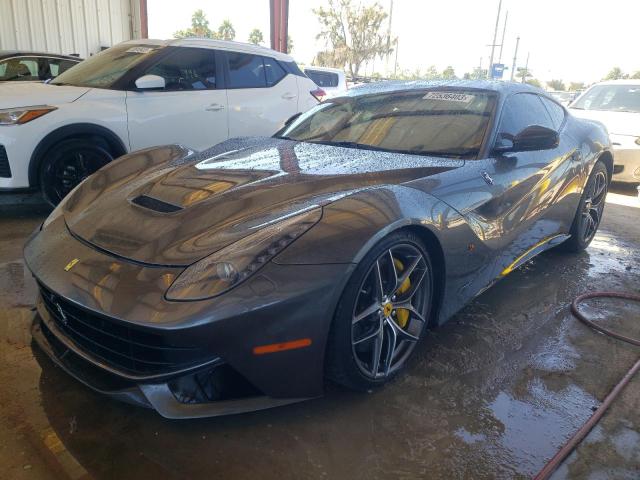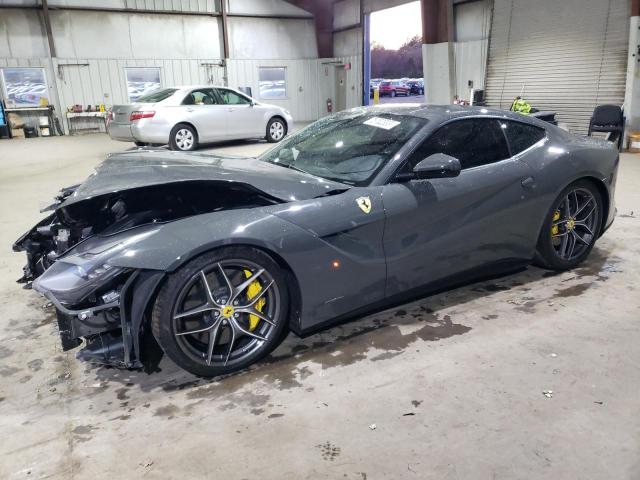2015 FERRARI F12 BERLINETTA | ZFF74UFA8F0209958
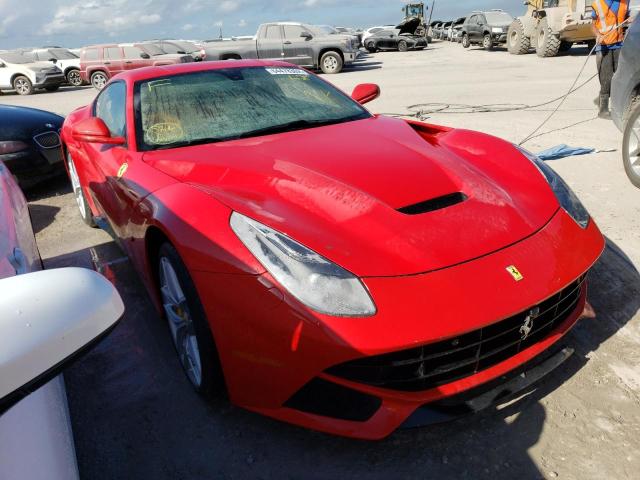 ❯
❯Lot details
- Sale Date2022-12-20
- Lot Number64478302
- ACV279366 $
- Sale documentFL -
- LocationFL - PUNTA GORDA SOUTH
- Odometer0 miles (0 km)
- Primary DamageWATER/FLOOD
- Secondary DamageMINOR DENT/SCRATCHES
Vehicle details
- Make
- Model
- Year2015
- FuelGAS
- Engine6.3L 12
- TransmissionsAUTOMATIC
- Drive TypeRear-wheel drive
Vehicle specifications
2
~$490,000
Engine: 6.3L naturally aspirated V12
Torque: 705 Nm
0–100 km/h: ~2.9 s
The Ferrari F12tdf was the most extreme front-engine V12 Ferrari of its era — a road-legal weapon inspired by track performance and historic motorsport pedigree. With 780 horsepower, revised gear ratios for quicker acceleration, and a dry weight over 100 kg less than the F12berlinetta, the tdf could sprint to 100 km/h in 2.9 seconds and hit a top speed of over 340 km/h.
Its performance upgrades were comprehensive: a rear-wheel steering system (Virtual Short Wheelbase) sharpened turn-in response, while aerodynamic enhancements — including a larger rear diffuser, active flaps, and a front splitter — tripled downforce compared to the standard F12. Lateral grip was improved through wider front tires and recalibrated magnetorheological dampers.
Inside, the F12tdf featured stripped-down materials, carbon fiber everywhere, no glovebox, and optional racing harnesses — a clear signal of its track-first priorities. Despite its grand touring proportions, it behaved like a mid-engine supercar under pressure, demanding commitment and rewarding precision.
As a spiritual successor to models like the 599 GTO and 250 Tour de France, the F12tdf captured Ferrari’s rawest interpretation of front-engine V12 performance. It earns an unshakable place in any performance registry as one of the most visceral and mechanically pure super GTs ever created.
Final Bid Ferrari F12berlinetta (2015)
$54,500
$54,500
$54,500
Body Styles
Coupe (F12berlinetta) – a fastback-style two-door GT with a front-mid engine layout, sharply creased bodywork, and an active aerodynamic design. The “Aero Bridge” routed airflow over the hood and through the flanks to reduce drag and increase downforce, while the long clamshell hood and Kamm tail referenced Ferrari’s golden-era GT cars. It combined daily usability with supercar performance.
Coupe (F12tdf) – a hardcore, track-oriented evolution of the F12berlinetta named after the historic Tour de France endurance race. Limited to 799 units, it featured more power, reduced weight, a wider track, rear-wheel steering, and aerodynamic revisions including a larger rear diffuser, fixed front flicks, and aggressive louvers. It was more demanding but also more rewarding for expert drivers.
Model Name Meaning (Manufacturer)
“F12” references the car’s V12 engine architecture, while “berlinetta” is an Italian term for a compact grand tourer coupe. Ferrari revived this name to emphasize the blend of power, elegance, and long-distance comfort. The “tdf” suffix stands for Tour de France, a tribute to Ferrari’s dominant racing history in the 1950s–60s GT endurance events – especially with the 250 GT TdF.
Model Name Meaning (Languages)
“berlinetta” translates globally as a badge of tradition and style. “F12” remains universally clear and technical. “tdf,” although abbreviated, is widely recognized in automotive circles as Ferrari’s top-tier designation, placing it in the same rarified category as “GTO” or “Pista”. The full name communicates GT purity with motorsport credibility across all major language markets.
Body & Interior Colors and Rims
The F12berlinetta was available in both classic and modern Ferrari shades: Rosso Corsa, Grigio Titanio, Giallo Modena, Blu Tour de France, Argento Nürburgring, and Nero Daytona. Many owners chose subtle metallics or triple-layer paints like Rosso Fuoco, Blu America, or Bianco Italia via Ferrari’s Tailor Made program. The F12tdf introduced matte finishes, bespoke racing liveries, and historic color callbacks such as Rosso Scuderia with heritage roundels and stripes.
Interior configurations ranged from full leather GT trim with contrast stitching to carbon-fiber racing themes with Alcantara, lightweight materials, and minimalistic touches. The standard cabin offered Daytona-style seats, optional LED steering wheel, and a central rev-focused driver zone. The tdf used carbon shell racing seats, bare aluminum floors, yellow/red racing dials, and deleted comfort features to reduce weight.
Wheels were 20-inch forged alloys, with options in silver, black, grey, or diamond-cut finishes. The F12tdf introduced a unique five-split–spoke racing design, lighter than standard wheels. All versions came with carbon-ceramic brakes, and calipers could be ordered in red, yellow, black, silver, or body-matching tones. Aerodynamic elements like splitters, diffusers, skirts, and rear louvers could be finished in exposed carbon fiber.
Top Expensive Options
- Carbon Fiber Exterior Package (Diffuser, Splitters, Sills): ~$18,000
- Carbon Engine Bay Compartment: ~$7,500
- Front Suspension Lift System: ~$6,000
- LED Carbon Steering Wheel with Manettino: ~$5,000
- Full Electric Daytona Seats with Ventilation: ~$7,000
- JBL Premium Sound System (berlinetta only): ~$4,200
- Tailor Made Custom Color or Stripe Pack (tdf): ~$10,000–20,000
- Forged Racing Wheels in Matte Black or Satin Gold: ~$6,000
- Ferrari Telemetry and Track Camera System: ~$5,500
- Luggage Set with Matching Leather & Stitching: ~$4,800
vs Competitors
The F12berlinetta stood apart from rivals like the Lamborghini Aventador, Aston Martin Vanquish, Bentley Continental GT Speed, and McLaren 650S. It offered true front-mid V12 balance, a lighter and more agile chassis, and a naturally aspirated character no longer seen in the segment. The F12 was more raw and exciting than the Bentley, more balanced and refined than the Lambo, and more emotionally involving than the McLaren. The F12tdf, meanwhile, reached levels of aggression and involvement matched only by track-focused exotics like the 911 GT2 RS or McLaren 675LT, making it one of Ferrari’s most demanding road cars ever.
Fun Fact
The F12berlinetta’s 6.3L V12 was, at the time of launch, the most powerful naturally aspirated engine ever fitted to a production Ferrari, producing 740 hp without turbo or hybrid aid. The F12tdf raised the redline to 8,900 rpm, introduced Virtual Short Wheelbase (rear-wheel steering) for the first time in a front-engine Ferrari, and lapped Fiorano faster than the Enzo.



